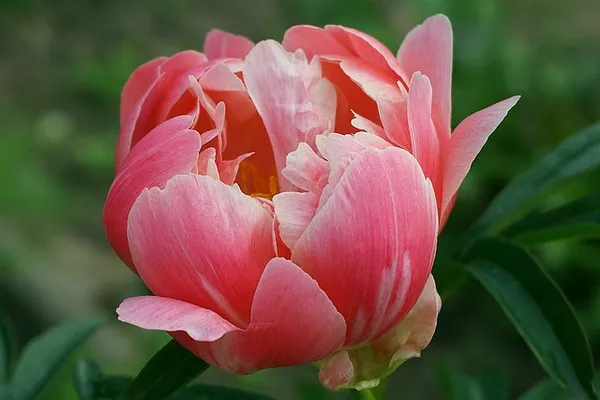Deer can be a charming sight in the natural landscape, but when they start feasting on your carefully cultivated flowers, the charm quickly fades. As any avid gardener knows, the presence of deer can pose a significant threat to the beauty and health of your garden. In this article, we will explore effective strategies to deter deer from indulging in your floral delights, allowing you to enjoy a flourishing garden without compromising on aesthetics or resorting to harmful measures.
Understanding Deer Behavior
Before delving into preventive measures, it’s essential to understand the behavior of deer. These graceful creatures are attracted to gardens not only for the vibrant blooms but also for the tender foliage and nutrient-rich plants. Deer are crepuscular, meaning they are most active during dawn and dusk. Knowing their habits enables us to devise strategies that capitalize on their behavior and discourage their visits without causing harm.
Creating Deer-Resistant Planting Zones
One of the most effective ways to protect your flowers from deer is to strategically design your garden layout. By establishing deer-resistant planting zones, you can minimize the appeal of your garden to these voracious herbivores. Focus on planting deer-resistant species in the areas closest to the woods or areas where deer commonly enter your property. Research local deer-resistant plants and integrate them into your garden for a beautiful yet resilient landscape.
Utilizing Repellents: A Safe and Eco-Friendly Approach
Repellents can be a valuable tool in your arsenal against deer invasion. With advancements in horticultural technology, there are numerous safe and eco-friendly repellents available on the market. These repellents often use natural ingredients like garlic, hot peppers, or predator urine to create an unpleasant taste or scent for deer. Applying these repellents regularly, especially after rainfall, can form a protective barrier around your flowers, discouraging deer from making a meal of your garden.
Implementing Physical Barriers
Physical barriers are a time-tested method to keep deer at bay. Fencing is perhaps the most reliable option, creating a formidable obstacle that deters even the most determined deer. Choose a fence that is at least 8 feet tall, as deer are known for their impressive jumping abilities. Additionally, ensure the fence is tight to the ground to prevent deer from squeezing underneath. While fencing requires an initial investment, it is a long-term solution that can safeguard your garden for years to come.
For a more aesthetically pleasing option, consider decorative fencing or mesh netting. These alternatives offer protection without compromising the visual appeal of your garden, allowing you to enjoy both the beauty of your flowers and the surrounding landscape.
Exploring Scented Deterrents: An Olfactory Approach
Deer have a keen sense of smell, and capitalizing on this can be an effective deterrent. Scented deterrents, such as soap bars, human hair, or scented sachets, can confuse and repel deer. The idea is to introduce foreign scents that make the garden less inviting for these animals. Place these deterrents strategically around your garden, focusing on the perimeter and areas where deer commonly enter. Rotate the scents periodically to prevent deer from adapting to a particular smell.
Investing in Motion-Activated Devices
Incorporating technology into your garden defense strategy can be both innovative and effective. Motion-activated devices, such as sprinklers or lights, startle deer when they approach, creating an uncomfortable experience that encourages them to seek alternative feeding grounds. These devices are humane and environmentally friendly, providing an automated solution to protect your flowers.
Motion-activated sound devices are another option, emitting noises that are unpleasant for deer without causing harm. The key is to regularly change the sounds emitted to prevent deer from becoming accustomed to a specific pattern.
Cultivating Deer-Unfriendly Plants
In addition to strategically planting deer-resistant species, consider integrating plants that deer find unpalatable into your garden. While no plant is completely deer-proof, certain varieties are less appealing to them. Plants with strong scents, prickly textures, or bitter tastes are generally less attractive to deer. Research native plants that fall into these categories and incorporate them strategically to create a less tempting environment for deer.
Consistent Maintenance and Monitoring
Regardless of the preventive measures employed, consistent maintenance and monitoring are crucial for a successful deer deterrent strategy. Regularly inspect fencing for damage or potential entry points, reapply repellents after rain, and refresh scented deterrents to maintain their effectiveness. By staying proactive, you can ensure that your garden remains a sanctuary for beautiful blooms rather than a buffet for deer.
Conclusion
Maintaining a flourishing garden in the presence of deer requires a thoughtful and multifaceted approach. By combining planting strategies, scent-based deterrents, physical barriers, and innovative technologies, you can create a garden that is both visually stunning and resilient against deer intrusion. Remember, the key is to employ a combination of these methods, adapting your approach as needed, to establish a comprehensive defense system that protects your flowers without causing harm to the graceful creatures that may wander into your landscape. With careful planning and consistent effort, you can transform your garden into a haven of natural beauty that remains untouched by the appetites of wandering deer.


